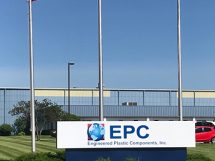By Jeanne Heilman

Every day, double stack freight trains transporting containers of American-made exports and imports from countries around the world crisscross this nation through Louisville, a critical manufacturing center and freight transit point. These containers carry the items that fill our homes, the parts, machines and raw materials that drive manufacturing and the things we use and consume every day. It is this cargo that creates jobs, spurs economic investment, drives spending and helps to fuel this nation’s economy.
Each piece of cargo moving by rail has a point of origin, a destination and a predetermined route designed to move the cargo as efficiently, economically and quickly as possible. Many of those rail routes connect Louisville with various seaports in North America.
From Oct. 2017 to Oct. 2018, more than $819 million worth of cargo flowed along the roughly 700 miles of railroad track connecting The Port of Virginia and the Derby City. In that 12-month period, the total value of exports (American-made goods for sale overseas) moving out of Louisville to Virginia was valued at nearly $388 million and the imports were valued at more than $430 million.
In all, more than 760 companies in Louisville move cargo via The Port of Virginia. Louisville is a significant importer of auto parts for Ford and Toyota, but woodenware, furniture, synthetic resins, hardware, medical equipment and plastic products are among the many things moving between this city and The Port of Virginia. The cargo flows to and from companies like Dow Chemical, Dupont Ashland Industries, Celanese, Jim Beam and KYFI to name just a few.
The Port of Virginia understands the importance of manufacturing here and as a result we are investing nearly $1.5 billion to ensure the unimpeded flow of cargo to Louisville and its peer cities throughout the Midwest.
Virginia’s investments include $750 million in upgrades and expansions to our two primary container terminals to include:
- Added capacity and new equipment to process an additional one million container units annually
- A doubling of our rail capacity
- Expanded capabilities to handle refrigerated cargo
- Longer berths capable of handling the biggest vessels in the Atlantic
- Across-the-board technology upgrades
In addition, we are spending $350 million to widen and deepen our commercial shipping channel and when the dredging work is complete in four years, Virginia will be the deepest port on the U.S. East Coast. Our expanded channel will allow for two-way traffic of the biggest container ships afloat, loaded to their maximum capacity. In short, this means more cargo, jobs and economic investment for Louisville.
Virginia and Louisville have always been well-connected by reliable intermodal rail service. Now, as trade patterns shift and the region’s industry diversifies, area cargo owners and shippers want greater reliability, predictability and diversity in their supply chains. Virginia’s newly-expanded terminals and technologically-advanced cargo operation is driving overall efficiency and this has strengthened the Virginia-Louisville connection: everyday, double-stack trains leave the port’s terminals in the Norfolk Harbor and reach this city in less than 65 hours.
This city’s logistics, manufacturing, warehousing and cargo community is connected to a world-class port that is generating best-in-class results for those users. The Port of Virginia’s goal is to treat the cargo well, listen, collaborate and continue to make purposeful investments that will benefit the economy of Louisville and the nation.
Jeanne Heilman is the midwest area manager for The Port of Virginia.




















Add Comment